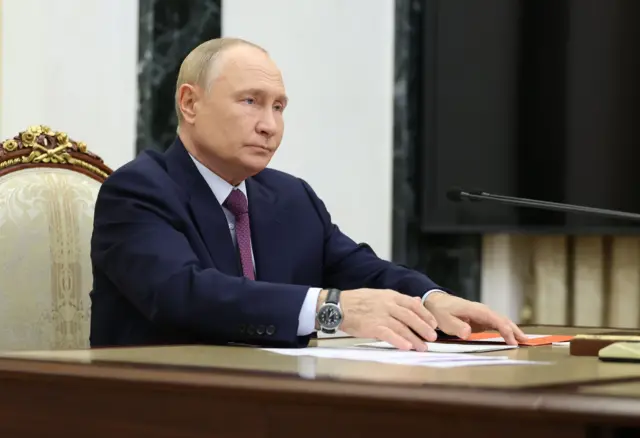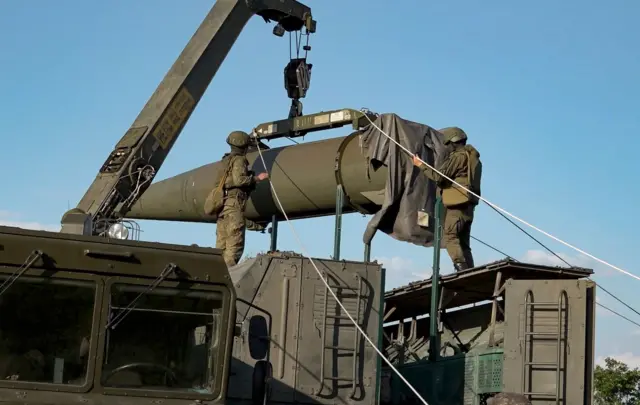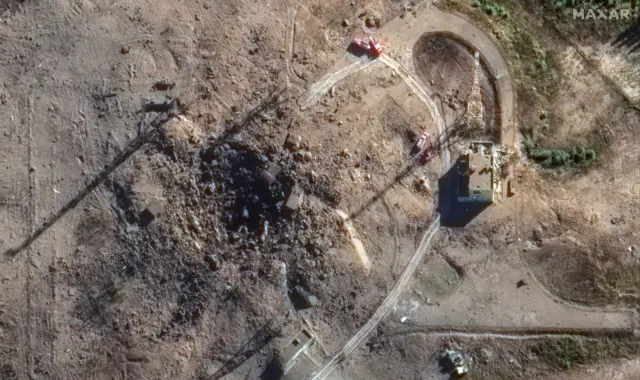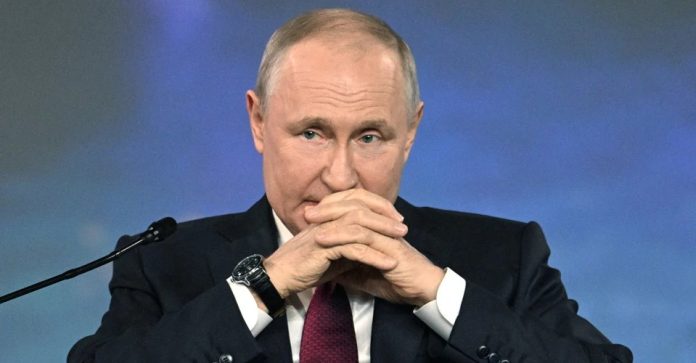In the light of recent events related to the change in nuclear doctrine of Russia, experts express serious concern about potential consequences for Ukraine and global security. Given the three years of the war in Ukraine, the new elements in the Kremlin's strategic approach to the nuclear arsenal can significantly change the game.
On September 25, Vladimir Putin announced about the change in the doctrine. Moscow significantly expands the list of grounds for nuclear weapons. Experts point out that this is a response to a debate on the possible permission of Ukraine to apply Western missiles to blows deep into Russia.
During a permanent meeting of the Russian Security Council for nuclear deterrence, Putin suggested amending the document called the "Fundamentals of State Policy in Nuclear Reinresting." This document became public only four years ago when it was approved by its current edition.
"The current military-political situation is dynamically changing, and we are obliged to take this into account. Including the emergence of new sources of military threats and risks for Russia and our allies," Putin said.
The doctrine, according to the Russian President, will introduce two new key provisions:
- In the updated version of the document, aggression against Russia by any non-nuclear state, but with the participation or support of the nuclear state is proposed to be considered as their joint attack on the Russian Federation;
- The use of nuclear weapons will be considered when "reliable information about the massive start of the means of air-space attack and the intersection of our (Russian.-ed.
Confrontation with event support support
The publication of the Fundamentals of Nuclear Reinstanding in 2020 was seen as a discharge gesture, since this document made a policy on strategic nuclear deterrent to more transparent and understandable.
Four years later, the situation in the sphere of restraint has changed radically. Russia began a great war with Ukraine, and the West began to support Ukraine.
In addition, in February 2023, Russia suspended its participation in the agreement on strategic offensive weapons (S-III). This agreement with the United States remained the latest document limiting the nuclear arsenals of the two countries. This is one of the few areas where Moscow and Washington continued to cooperate.
Changing the nuclear doctrine, taking into account the exit of Moscow from the SNO and the Great Bloody War, in which the Russian authorities are constantly blaming the West, looks a rather terrible step.

Photo author, EPA
Meanwhile, experts, to whom the BBC asked to comment on the amendments to Vladimir Putin declared to the doctrine, do not believe that this document has changed fundamentally.
According to them, nuclear doctrine is a document that does not oblige the country's management to automatically use nuclear weapons in certain situations described in it. It only allows you to consider this option, taking into account many factors in the international atmosphere.
Has the nuclear doctrine actually changed
According to the Air Force Maxim Stachak from the KNIVS University of International and Defense Policy, the new provisions of nuclear doctrine specify the conditions of nuclear weapons use, but the reasons for its use do not change.
"This is a threat to the state and the threat of nuclear weapons. If earlier the use of nuclear weapons was an attack of ballistic missiles, it has now expanded to all means of air-space attack," he said.
He doubts that the essence changes radically.
"But in fact, it was already considered a threat that can adversely affect the strategic restraint forces, and in the current doctrine," the expert added.
In the acting doctrine, there is indeed provisions on aggression against Russia with the use of ordinary weapons, when the very existence of the state is threatened, as well as the impact on objects whose disruption will disrupt the actions of the Russian nuclear forces in response.
In other words, the position of the doctrine that was so common that they blocked each other, allowing them to apply different provisions at the same time.
"Belarus officially received a nuclear umbrella for any attack on it-it was already recorded in other words in the military doctrine of the union state. The fact that participation in the aggression of a non-nuclear state with the participation of nuclear can lead to a nuclear blow in response, has already been recorded in Budapest."
Do Ukraine have to worry even more
At the same time, Pavel Davil, the head of the Russian Nuclear Weapons, believes that the doctrine that operates has imposed such restrictions on the use of nuclear weapons that wanted to weaken them.
"Conditions for the use of nuclear weapons - aggression against Russia with the use of either weapons of mass destruction or by usual means, but which are jeopardized by the very existence of the state. If you look at this wording, it limits enough. And what made the decision somehow the wording of this wording and adjusting, testifies.

Photo author, EPA
However, he agrees that the total framework of the doctrine that was still allowed to use nuclear weapons in situations that describe in more detail Putin's provisions. That is, the Universal Declaration of Intentions in the field of nuclear restraint has not changed.
Nuclear doctrines often contain fairly blurred formulations. This is to ensure that a potential opponent does not have the temptation to take some action close to the "red line", but without its intersection.
But given the fact that Russia has now proclaimed several Ukrainian regions in its territory, this blur includes too much.
Will Russia be considered aggression in the sky over Zaporozhye or Crimea of Ukrainian missiles or fighter jets? Especially Western production, which is separately stipulated in the new version of the doctrine.
According to Paul Davil, "there is still a common understanding of the boundaries of the possible": "It is clear that a blow to the ammunition repositories is not a threat to the existence of the state. But, on the other hand, who will interpret it, who will do it?"
At the same time, the well -known Ukrainian expert and the head of the Foundation "Come back alive" Taras Chmut in response to Russia's decision mentioned a possible blow by Russia with tactical nuclear weapons.
"From the good - Russia is more weak now. From the bad - let's think how to experience a possible tactical nuclear stroke," he commented on Putin's decision on the air of "militaristic".
"The system that will be on the verge of collapse, she will not lose anything, and she will calmly apply something somewhere as a factor of stopping the processes that she has not used yet. They will lose nothing," Chmut added.
Nuclear threats of Russia
The new provision on "aggression against Russia by any non-nuclear state, but with the participation or support of a nuclear state" is likely to be related to discussions in the US leadership on the opportunity to allow Ukraine to apply Western missiles against the goals in Russia.
Armed for the Armed Forces are American ballistic missiles MGM-140 ATACMS and British-French winged Storm Shadow/Scalp. The range of the first is 300 kilometers, the second - 250.
Ukraine seeks permission to apply these missiles to strikes the Russian territory, but it can still apply them within its state borders in the occupied territories.
From the very beginning of the Russian invasion of Ukraine, Vladimir Putin mentioned nuclear weapons in his public rhetoric.
On February 27, 2022, by order, Russia's strategic nuclear forces were brought "into a regime of special combat duty." True, no one gave the details of what such a regime.
In March 2023, the Russian president ordered to place tactical nuclear weapons in Belarus.
Formally, this was done in response to the transfer of tank shells with depleted Uranus, but in fact, such an answer was unbalanced and asymmetric - shells with a depleted Uranus are not in no way nuclear weapons and, in addition, they are rarely used.
At the end of May 2024, Russia conducted tactical nuclear weapons. It was not used, but was transported and unfolded.
Each time Putin's statements about nuclear weapons and Russia's actions with various nuclear weapons have caused resonance in the international community. However, later they began to be calmer.
On September 7, the CIA Director William Burns, in the presence of his British colleague-Mi-6 Richard Mura, acknowledged that at the end of 2022 there was a moment when, he said, there was a real risk that in response to a number of failures on the battlefield, Russia would apply a tactical nuclear weapon. According to Burns, he then depicted the consequences of such use to Russian officials.
"However, I never thought - and this opinion of my whole department," that we need to feel unnecessary fear on this, "the CIA's director continued." Putin is typical.
Failed Putin's rocket test
A statement about the change of nuclear doctrine was heard a few days after the incident on the Russian military spaceport Plesetsk.
Judging by satellite images and other data, a strong explosion occurred at the site where the intercontinental Sarmat intercontinental ballistic missile was tested, which probably destroyed the rocket launcher.

Photo author, Reuters
Given all the circumstances, this incident is very similar to the unsuccessful test of the rocket.
Sarmat is a new Russian liquid intercontinental rocket that initially has high characteristics. It should carry up to 10 tons of nuclear blocks, which is much more than other missiles.
In addition, it has a high range and high speed, which allows it to oppose more effectively about the early stage of flight.
Sarmat became one of those types of weapons that Vladimir Putin told in his famous speech on March 1, 2018. Then, in his 14th Epistle, he unexpectedly devoted almost half of the story about new types of weapons.
During his speech in the background showed called throwing rocket tests.
The rocket was adopted and put on a combat duty after only one successful test - an unprecedented case. Experts believe that this product is still extremely far from combat readiness.
If Russia really tested the Sarmat rocket on Sarmat on September 20, it would probably have become a vivid illustration of Putin's words about changing nuclear doctrine.


